
Roger Pellett
-
Posts
4,519 -
Joined
-
Last visited
Content Type
Profiles
Forums
Gallery
Events
Posts posted by Roger Pellett
-
-
I second Bobs recommendation for Ansel’s book. I also recommend “To Build a Whaleboat” by Eric Ronnberg, and “Whaleships and Whaling” by Albert Church.
Church’s book is especially interesting as he either furnished cameras to whaling crews, sailed himself, or both; I don’t remember which. The result is a remarkable series of photos detailing the entire whaling process. The pictures show whaling under sail during its final days.
Ronnberg’s book describes whaleboats from an earlier period, mid Nineteenth Century. It includes both history and construction of the Model Shipways kit. If buying the kit, see if it is included. Ronnberg’s book includes many details not covered by Church or Ansel. He has spent a lifetime researching the New England fishing and whaling industries.
Roger
-
I have a bottle of “Blacken it”. If I take reasonable precautions- file surfaces to bright metal, a short soak in a small tin of acetone or lacquer thinner, then immersion in the blacking solution I have never had it fail to work. It will not blacken solder so I touch up those areas with a dab of flat black model enamel. To prevent later damage to the blackened surface I seal it with a spray of Dulcote.
-
The photo below shows wood species from my wood pile. From the top of the photo down: Holly, Lilac, Buckthorn.
Relative Hardnesses: Basswood. 410
Buckthorn. 1040
Hard Maple. 1450
Lilac. 2350
Both Lilac and Buckthorn have tight, fine, and unabtrusive grain structures. According to the Wooddatabase both can be us d for small carvings. When cut and planed both had a polished surface. Lilac could be used for carvings and turnings. Buckthorn in larger sizes could be used for POF structural members.
The small clump trees in the next photo are Buckthorn growing on the edge of my yard.
I have some experience with Chestnut. In 1960 my parents had a pile of wormy Chestnut lumber milled into tongue and groove paneling. It was quite soft, had a very pronounced grain structure, not unlike Oak, except that it has very dark bands between adjacent grain sections. It made a nice backboard for a half model but I would consider it to be unsuitable for other ship modeling uses.
Roger
-
My two cents worth:
This topic was widely discussed in the NRJ back in the ‘70’s when a modeler living in Chicago named Jack Kertzow (sp?) began investigating locally harvested woods. He later moved to Florida where he explored the different woods available there. He published a series of articles in the Journal that have been reproduced in Volume 1 of the Guild’s Shop Notes. Support the Guild! Buy a copy if you have not already done so.
I was interested to see Buckthorn listed on the post about August Crabtree’s models. Here in Minnesota, the state is on a campaign to get rid of this invasive species planted years ago as an ornamental. It is more like a large bush than a tree. It spreads like crazy and grows quickly. There is a supply growing in the woods behind my house. I cut a piece that has been drying in my basement. I’ll have to see what it looks like.
Another unlkely candidate from a quick growing shrub might be Lilac. It appears to be a white, hard wood. The last time I had my Lilac bushes cut down, I saved the larger cuttings, also drying. Like Buckthorn, they are not likely to yield large pieces but might be good for carvers.
Roger
-
My father used one of these saws to build an L. Francis Herreshoff H-23 (Prudence) Sailboat) fully framed and planked. The boat was launched in 1950 and he continued to use the saw until he died in 1986. I think that he modified it to use an 8in blade. I passed it on to my Brother-in-law but doubt that he ever used it. It was, and presumably is, indestructible.
Roger
- Canute, thibaultron, Bob Cleek and 2 others
-
 5
5
-
I have never built a POB kit and don’t intend to do so. My models are carved from solid blocks, laminated lifts, or POF. Having read many posts from modelers struggling with POB kits I offer the following:
Most POB kits do not provide enough bulkheads to ensure an accurately shaped hull. Unless a fixture is built to restrain it the spine bulkhead combination lacks necessary rigidity leading to difficulty fairing and planking. In an effort to make up for widely spaced bulkheads, kit manufacturers have adopted two layers of planking where areas in the first layer can be faired before adding the final layer.
My suggestion would be to completely fill in the areas between the bulkheads with wooden blocks. By using the bulkheads as a guide these blocks can be easily cut to the required profile with a coping saw. With blocks glued between the bulkheads the hull can be accurately shaped. Since the hull is now a continuous wooden surface, the “first planking” is now unnecessary, and the modeler can now apply the “second planking, or if kit dimensions require two layers the solid substrate will provide a firm foundation.
Roger
-
In working on boats I found that drywall screws make great temporary clamps. Dipped in wax they are easily removed. Holes are then puttied up with thickened epoxy.
- Keith Black, Egilman, Canute and 5 others
-
 8
8
-
Although the forum has devoted much space to theft of intellectual property, I suggest that we broaden the conc pt to ethical purchasing practices in general.
On a garden tour of Yorkshire and the English Lake District four years ago, a gardener maintaining a garden featuring a number of ancient Boxwoods told us that many English Boxwoods were being lost from an invasive blight that was brought into the country from China. With that in mind should we really be thinking of buying Chinese Boxwood?
-
There are dozens of stories about the guy who couldn’t get the boat he built out of his basement. Are you sure that you can get this into your house?😩
- lmagna, mtaylor and Old Collingwood
-
 2
2
-
 1
1
-
Steven,
Re: Your longboat.
At this small and challenging scale, you might try another wood product- paper. Strips of heavy weight high quality paper might be easier to use than wood. This little boat is paper planked over a wood core. It is 40 years old.
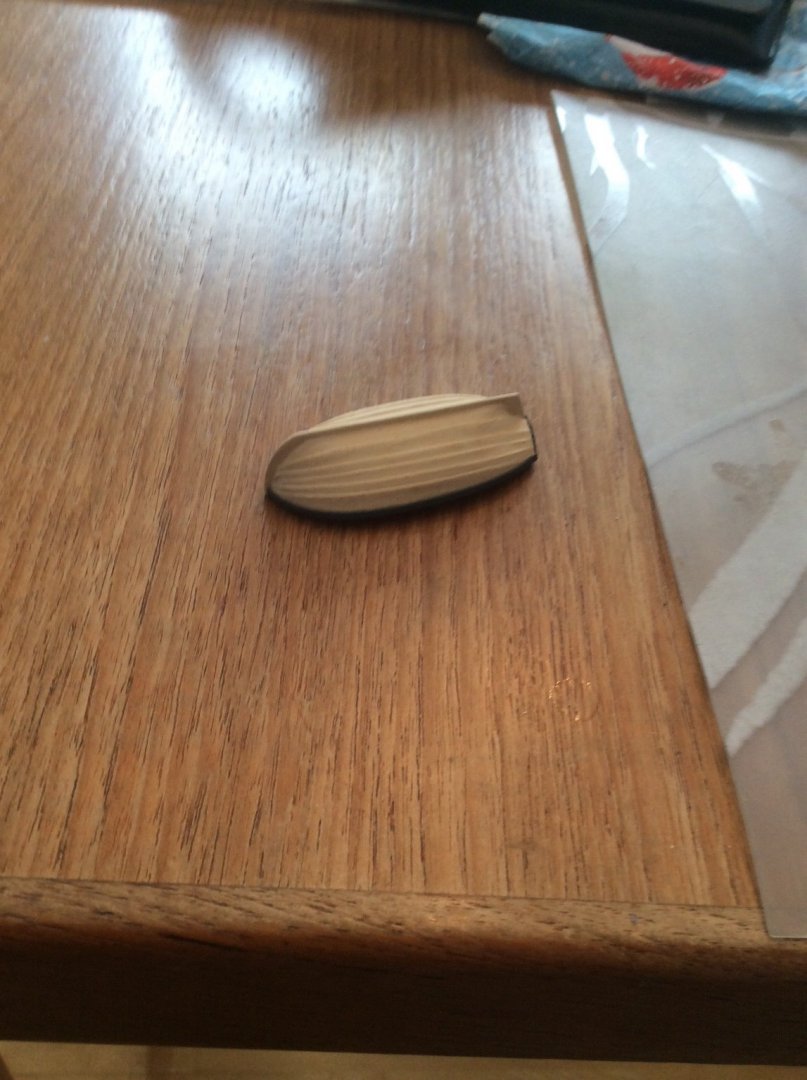
I am am interested in these early ships’ boats as I would like to add a model of one to my collection. A couple of years ago I bought the AOTS volume for Mary Rose as the promotional literature said that it included information on her boats. When I received it I was disappointed to find that the reconstructed boat pictured bore no resemblance to the iconographic evidence available; especially the Anthony Roll. Worse yet, they made no effort to explain or justify the design that they presented.
Roger
-
Eugenio,
That’s a great picture! That must have been a real adventure. Even today, with so many people traveling (pre Covid) a round the world trip is unusual.
You’re right, Beijing can be quite cold in the winter when fronts come down from Mongolia.
Harbin would not be on anybody’s “must see” destinations in China. The topography is flat, and at least when I was there in the late ‘90’s the city was smoky.. It was home to two large companies that built equipment for the electric utility industry; boilers and turbines. I was visiting the Harbin Turbine Works. In the middle of the city there was an old Russian Church, the kind with onion shaped steeples, that had been converted into a museum. In January, it was unheated so I didn’t stay long. I was there during their winter celebration with ice sculptures and a huge building built from blocks of ice. For a few coins you could rent a small sled to slide down the side of it. At that time the rail yards were still filled with steam locomotives puffing away.
While I’m glad to have had the opportunity to go there, the two trips that I made were enough. According to the railroad timetable your great grandfather would have stopped there in 1914 while it was still a Russian City.
Roger
- mtaylor, thibaultron, GrandpaPhil and 2 others
-
 4
4
-
 1
1
-
The curves defining ships’ hulls are supposed to be what Naval Architects call “fair,” smooth without lumps or bumps.
If you bend a strip of wood without restraining it, it will automatically assume a fair shape.
If localized areas of your planking are pulling away from the substrate it is probably because your “first planking” has not been properly faired. Trying to correct this by injecting glue and squeezing more glue underneath will only cause areas of unfairness in your finished hull.
Roger
-
And a cold one! During my working career, I made two trips, both in January to Harbin, China, a former Russian railroad stop on the TransSiberia railway network. Coming from a cold climate I was still not prepared for the bitter cold.
- Archi, mtaylor, thibaultron and 1 other
-
 4
4
-
Beautiful Ship! Beautiful work!
- ChrisSC, Canute and Old Collingwood
-
 3
3
-
Every WW II account talks about the constant chipping and painting that occured aboard ship, especially in the Pacific Theatre where operations were intense and shipyards far away. Much routine maintenance was performed at advanced bases at various atolls.
This was also prior to common availability of premixed paint colors. Navy specifications include instructions for mixing different colors, but if in mixing the color the deck gang might have been heavy handed with an ingredient.
With all of this, I believe that there was considerable variance in the colors actually used to meet Navy Camouflage Measures.
The ship’s appearance would also depend on when she was painted as shades of blue are notoriously subject to fading.
Roger
- Egilman, Old Collingwood, mtaylor and 4 others
-
 7
7
-
A nasty day outside today so I got uninterrupted time in my workshop. I got busy on the rope drive to feed wood into the sander.
First, I needed some pulleys. These were made from aluminum angle iron from the scrap bin. A pair of nice brass sheaves were scavenged from a pair of hardware store bought for a now forgotten project many years ago. Miscellaneous machine screws, nuts and washers are from my parts drawers. Net cost of all this: $0.00.
Pulleys mounted on the machine’s back end. Tomorrow, I’ll get busy on the front end. This will be more complicated.
Roger
- Keith Black, mtaylor, bruce d and 1 other
-
 4
4
-
Not exactly on everyone’s beaten path, but the old firehouse in Superior, Wisconsin is home to a Firefighting Museum, managed by the same organization that manages the SS Meteor Great Lakes Whaleback Steamship.
They have several of these old fire engines including a steam pumper like that posted above by Landlubber Mike.
I don’t know the specifics of any of their equipment. I once had an interest in fire trucks. I had a fire house that had springs in the back. When you opened the overhead doors in the front, several plastic fire trucks came speeding out. My interest in this proved to be fickle as model boats soon became an overwhelming interest.
Roger
- Canute, popeye the sailor, mtaylor and 5 others
-
 8
8
-
That kind of detail on a picture of a plane flying at 35000 ft! Remarkable! I’m surprised that you’re able to hold the camera steady enough or do you use some sort of mount?
Roger
- Edwardkenway, Egilman, mtaylor and 2 others
-
 5
5
-
Very nice work. This is really experimental archeology. Has this given you any insights into why builders would have used this method of construction?
Roger
- Louie da fly, J11 and mtaylor
-
 3
3
-
-
Many years ago when we were living in Ohio the Columbus Zoo took over a small amusement park and water park adjacent to their grounds. My wife and I and our two kids visited the Zoo and of course the kids wanted to go on the rides. My son was about 7 and my daughter 10.
The first ride that we came to was called the Black Squid, probably similar or the same as the Octopus; seats that spun around while the arms that they were mounted on rotated and moved up and down. My son insisted that we try it, my daughter declined. I agreed to go with my son. The thing started up and I wound up being completely disoriented. After it was over we got off, sat down and waited for the nausea to pass.
That was the end end of the rides. The water slides were much more fun.
Roger
- Egilman, Edwardkenway, lmagna and 4 others
-
 7
7
-
I paid $150 for a 10in used Delta table saw- ready to run. It will accept a wide variety of blades including hollow ground ones that produce a smooth finish.. A thin rip guide sold by Rockler Woodworking is available for less than $50. A jointer or portable planer might be needed depending on the condition of the wood that you receive.
Although their commercial value may be low, both maple and cherry are recognized as being suitable for ship modeling. Oak with its open grain is not. Since you have an unlimited supply, waste associated with the use of a full sized table saw should not be a concern.
A used full sized table saw equipped with the right blades and a thin rip guide should go a long way towards allowing you to mill this lumber for your own modeling needs.
Selling lumber on a commercial basis is a whole different matter. You have to consider all of the factors involved with starting any business. Demand for these common wood species is only one of them.
Roger
-
- mtaylor, Keith Black and Canute
-
 3
3
-
When I was in the Navy I lived in a house with three other guys that had been passed along for so many years that supposedly a letter was received one day addressed to “Rickover’s Rookies, Washington, DC.” One of my house mates had a buddy who had returned from Vietnam to teach at the Navy’s jet training school in Meridian, MS.
Every so often there would be a pile of flight gear by the front door and I knew that this guy was visiting. I once asked him how he was able to take the plane and to refuel it along the way. He said that this was a perk to keep fliers from leaving for the Airlines and if you landed at a military base with the plane they figured that you were entitled to the fuel.
He offered to take me flying if I would get qualified in an ejection seat. I believe that there was a set up at Andrews AFB. Unfortunately I never took him up on the offer; something that I have regretted ever since.
Roger
- mtaylor, Old Collingwood, lmagna and 3 others
-
 6
6

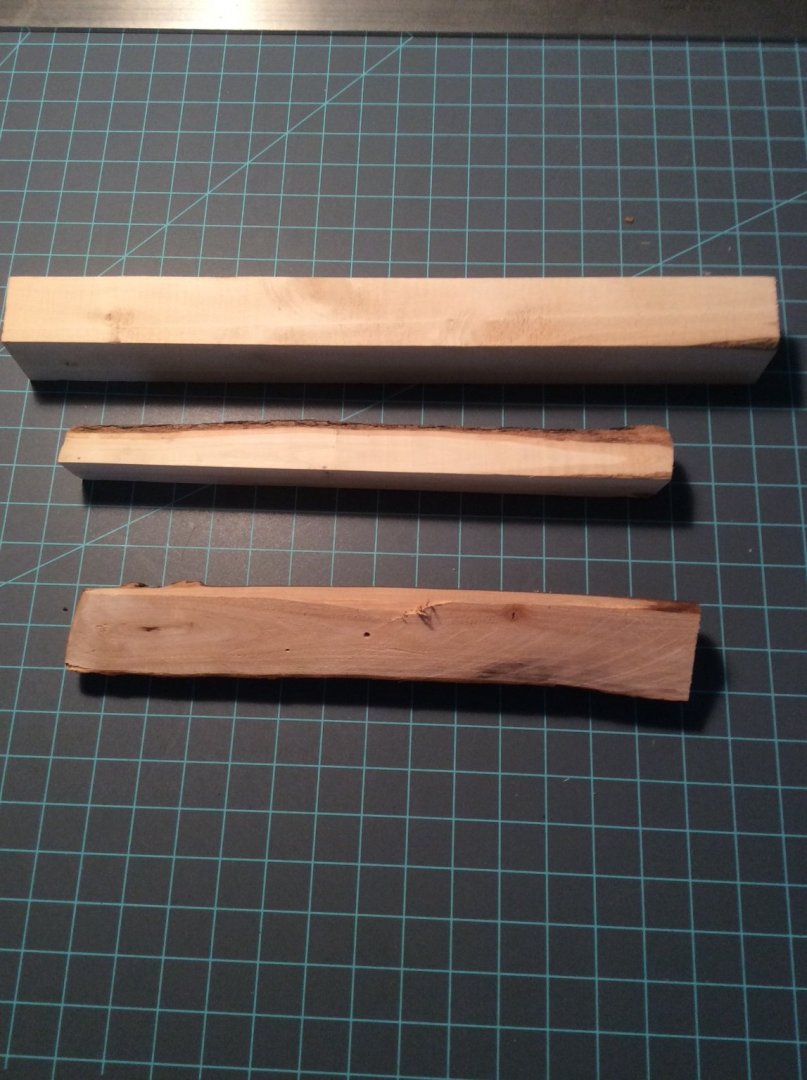
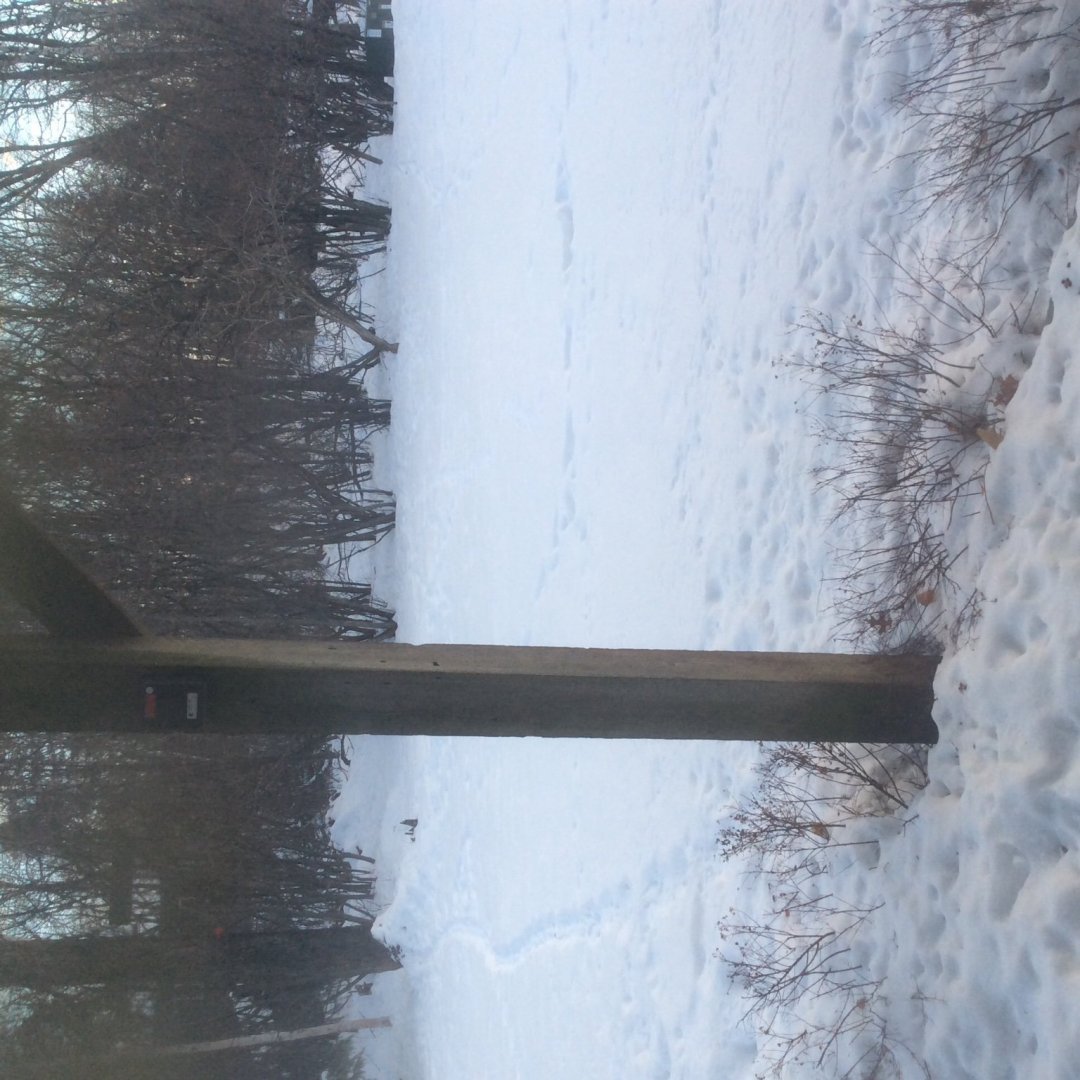
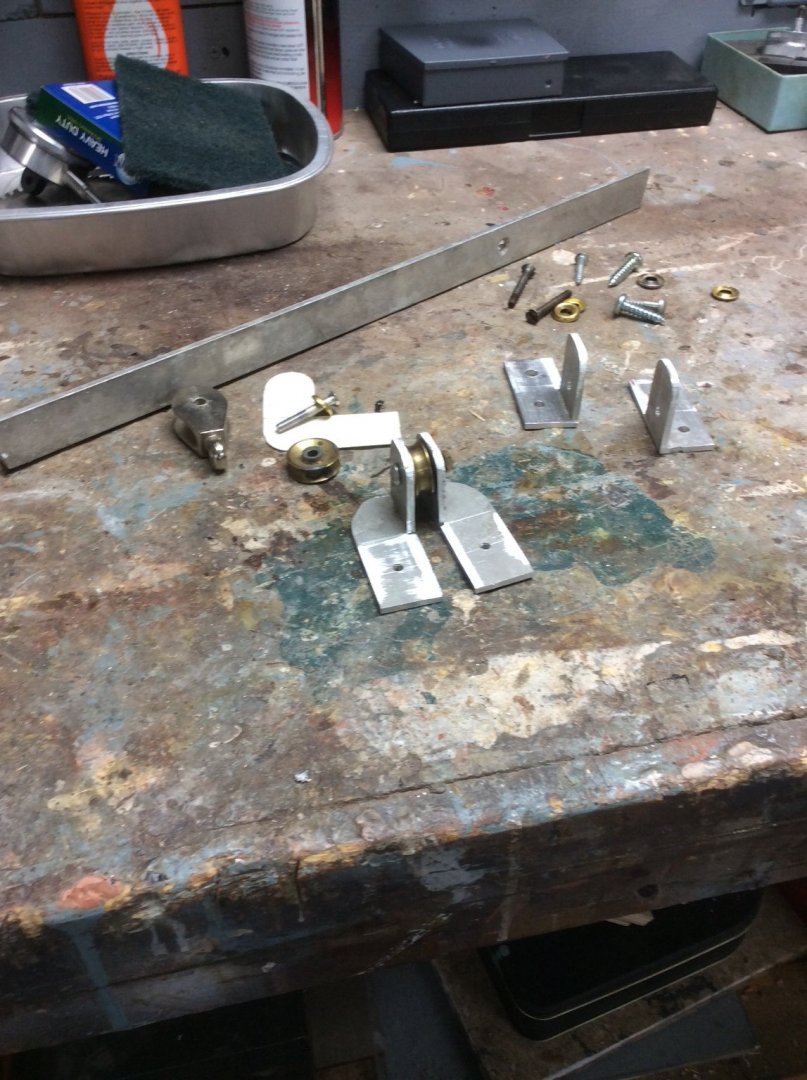
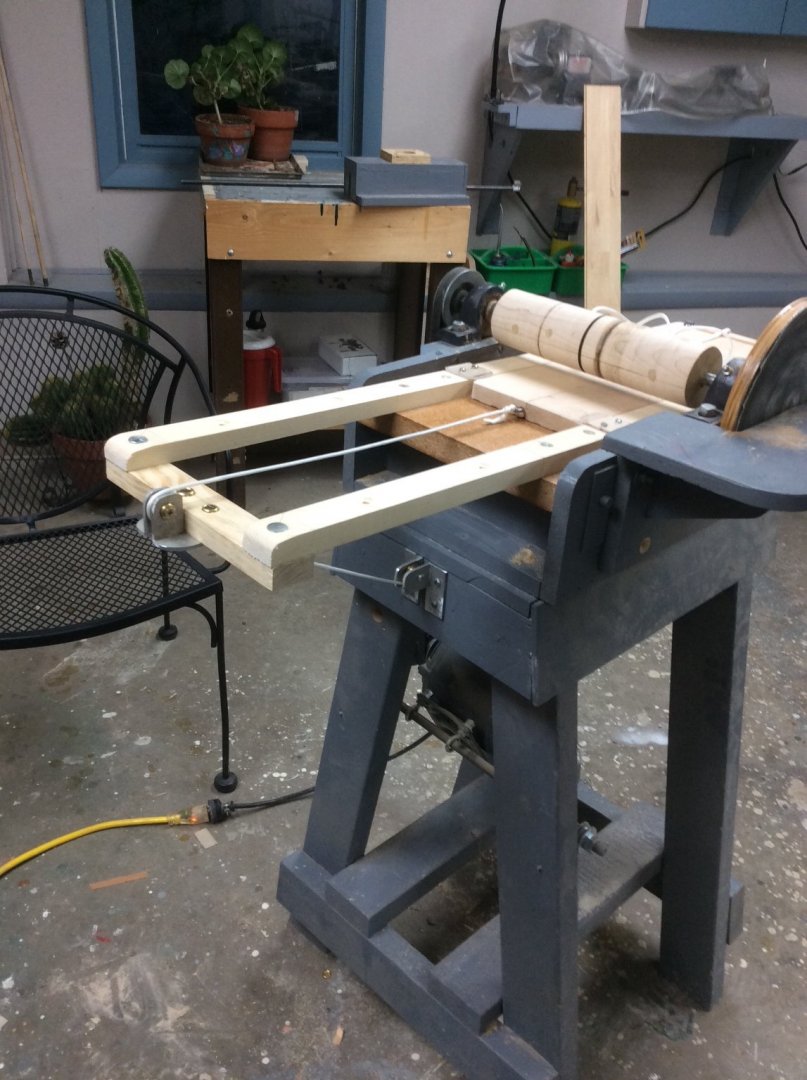

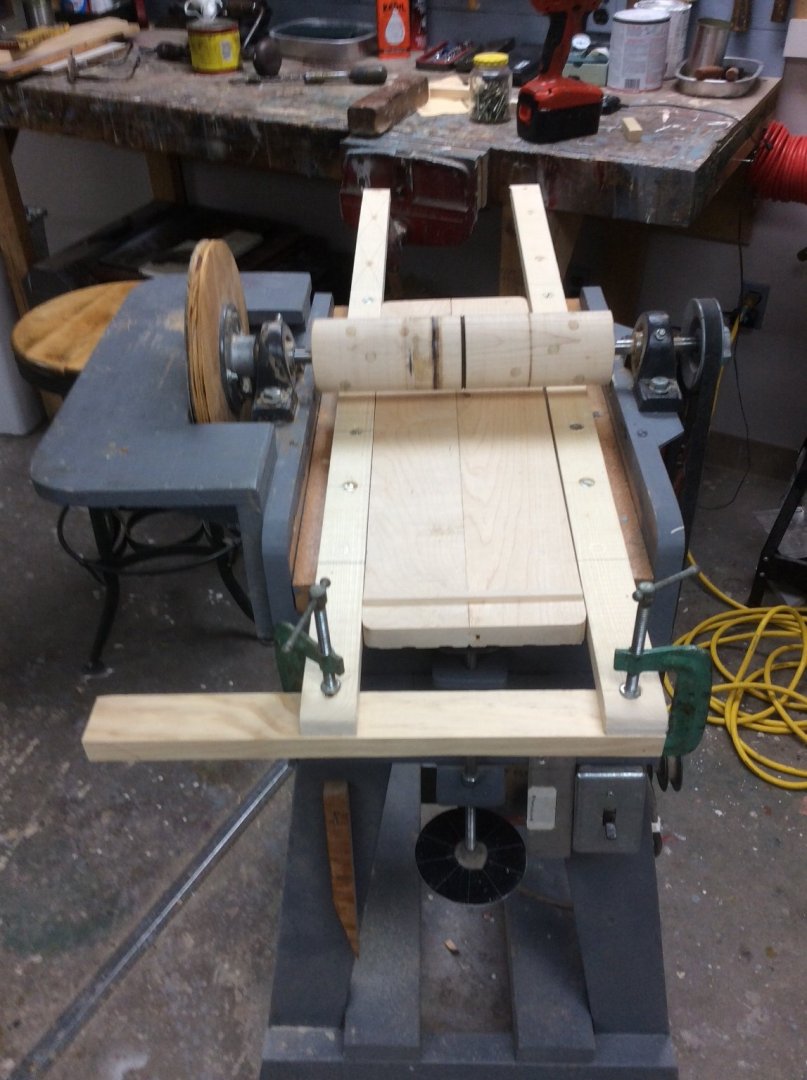
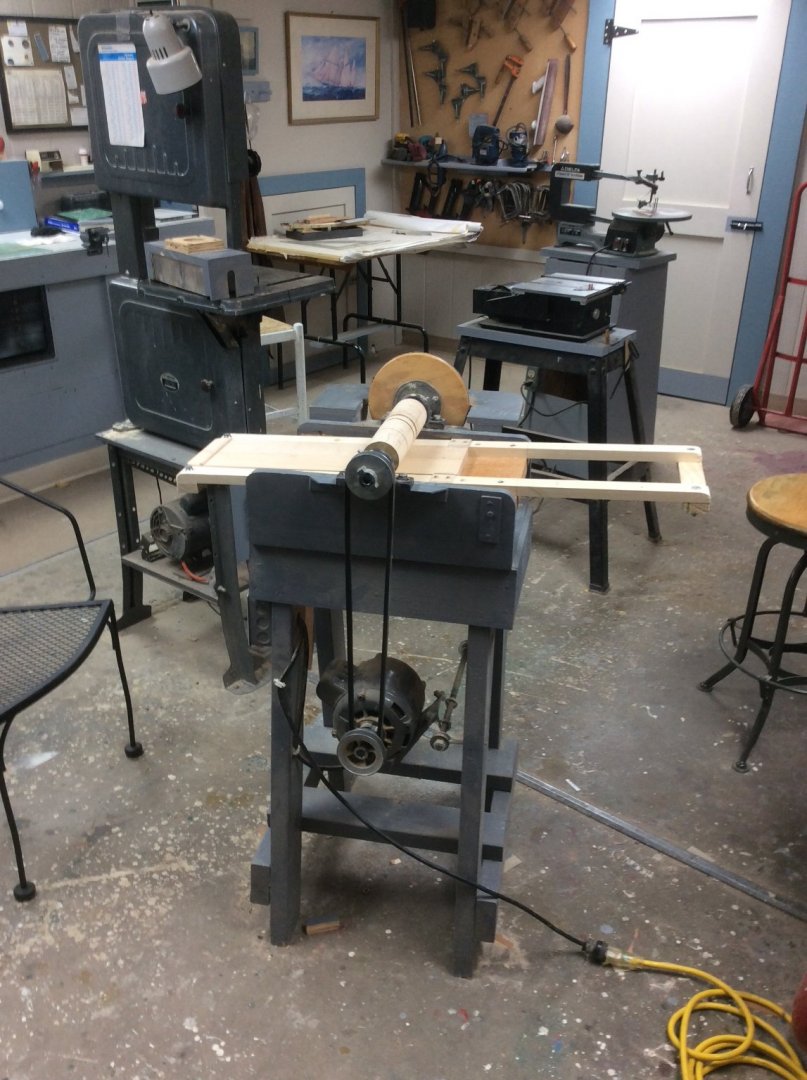
Improving a Homemade Thickness Sander
in Modeling tools and Workshop Equipment
Posted
I spent the week making parts, now all finished except the 1/2 in steel shaft that has to be drilled to accept cotter pins. I splurged and bought the four 12mm Id flanged collars about $20 delivered from Amazon. I used two of them so have two left over for something else. The 12mm bore was easily bored out on my drill press to fit a 1/2in shaft. I should have it assembled in the next couple of days
the disc disc in the foreground is a rachet, a precaution to prevent the machine from eject the sled into the operator. To back up the sled the pawl (not made yet) is disengaged.
The cardboard pattern for the ratchet.